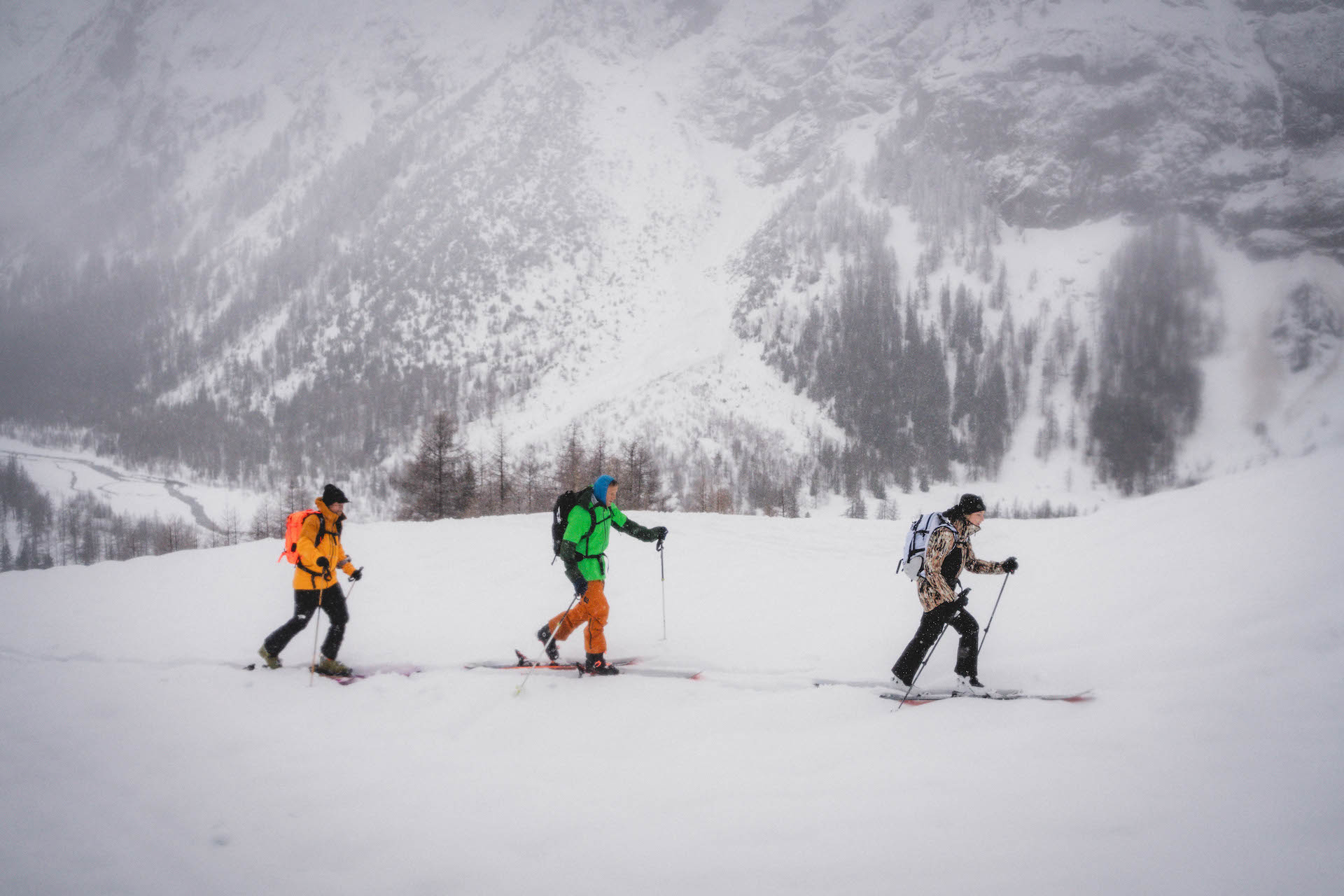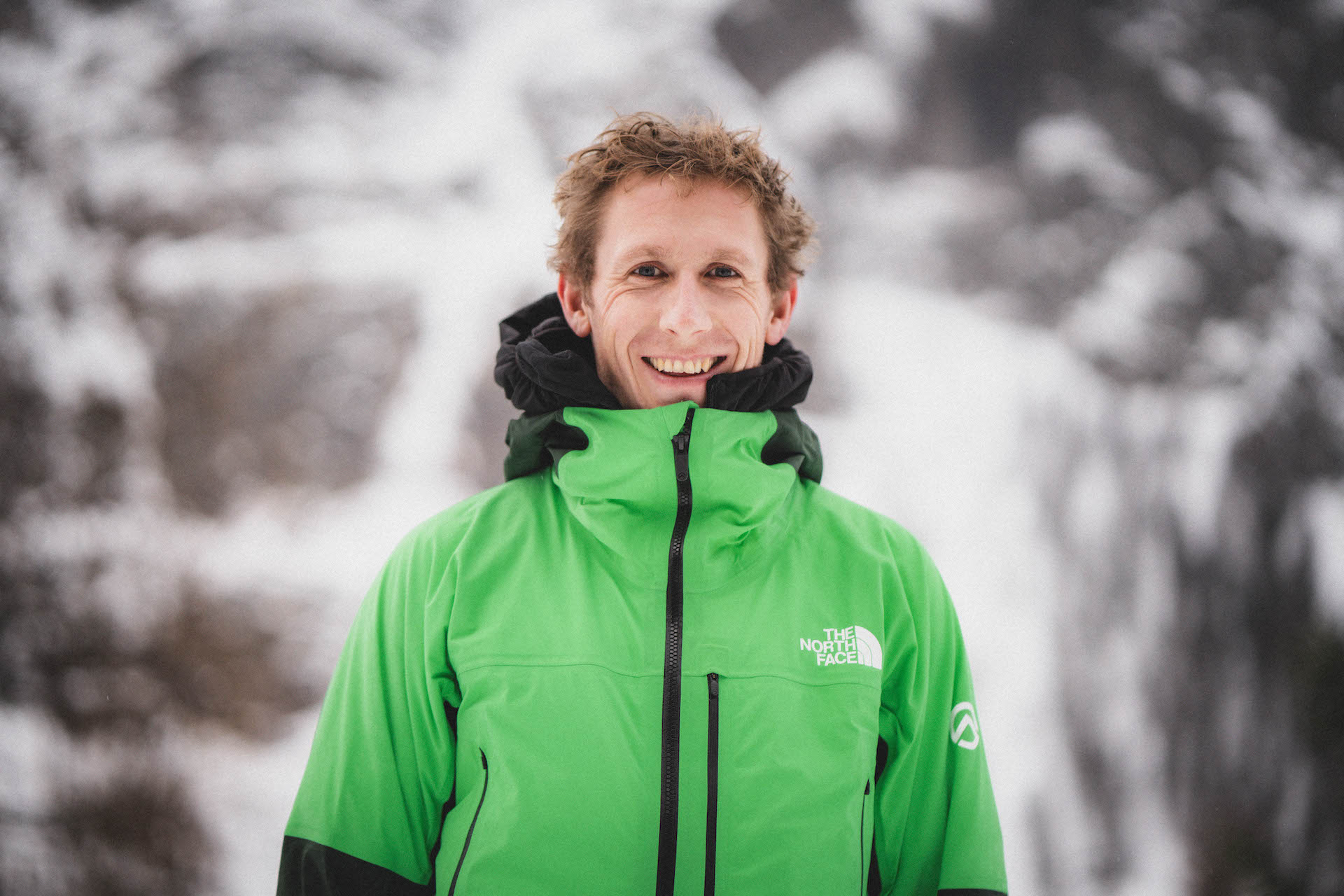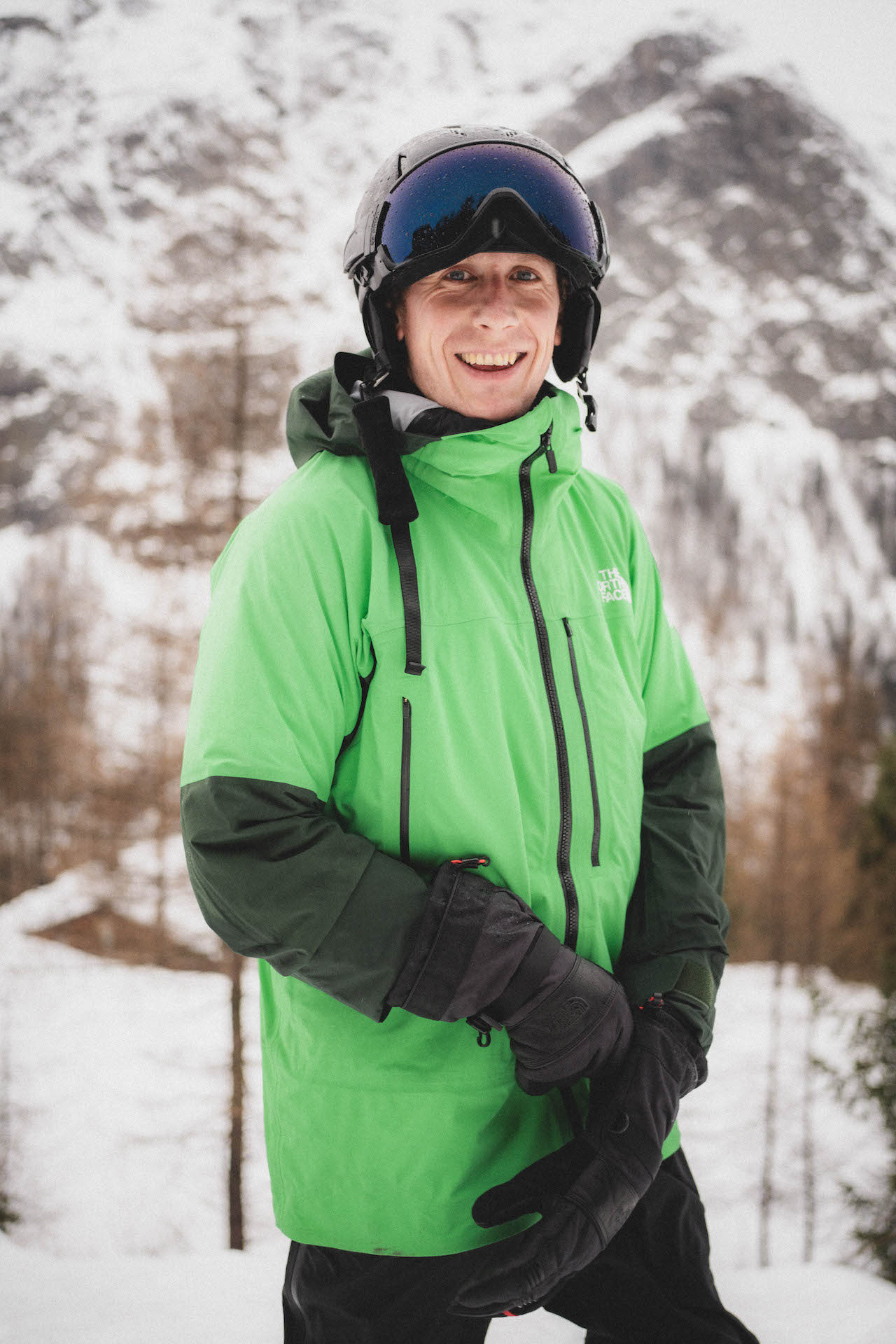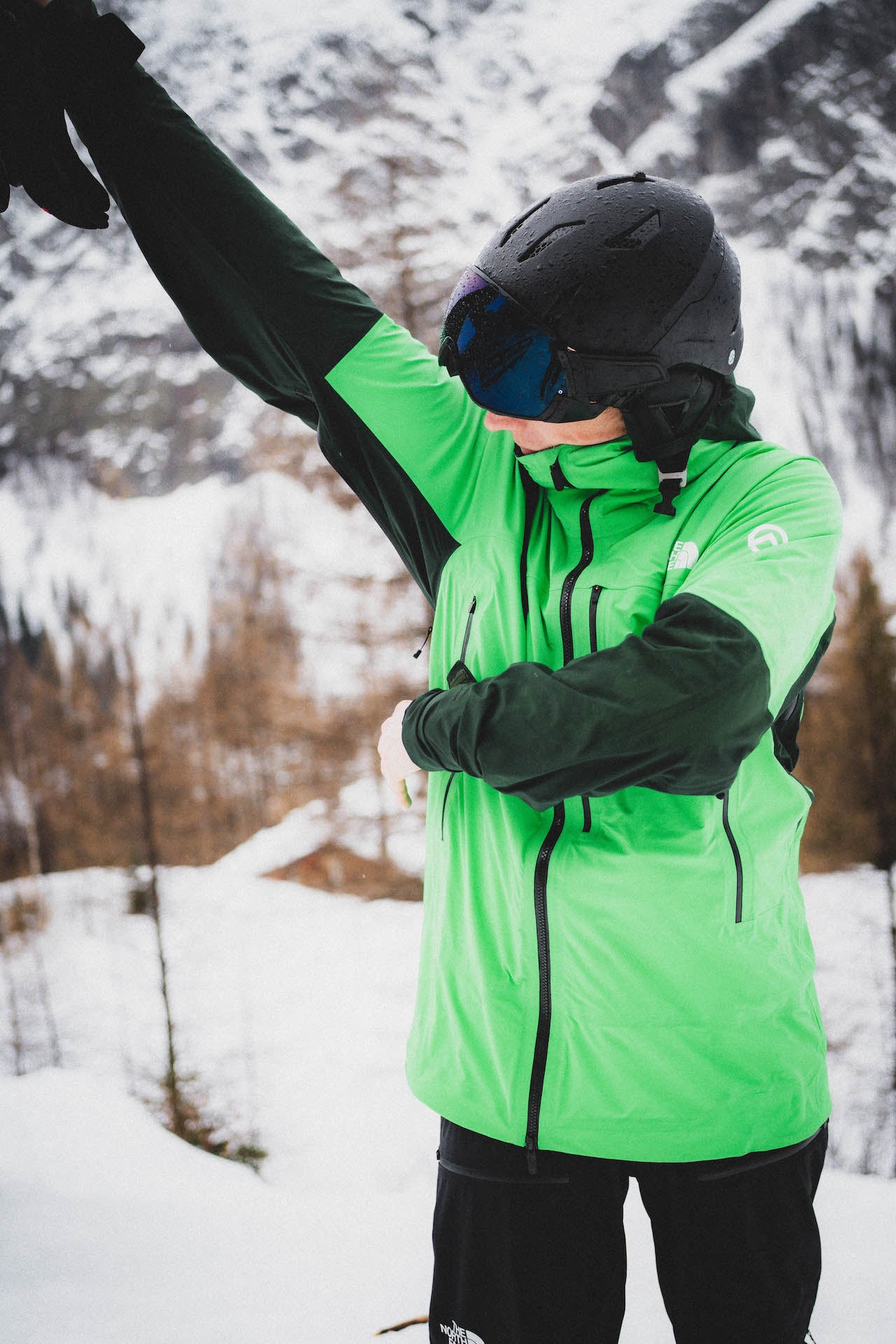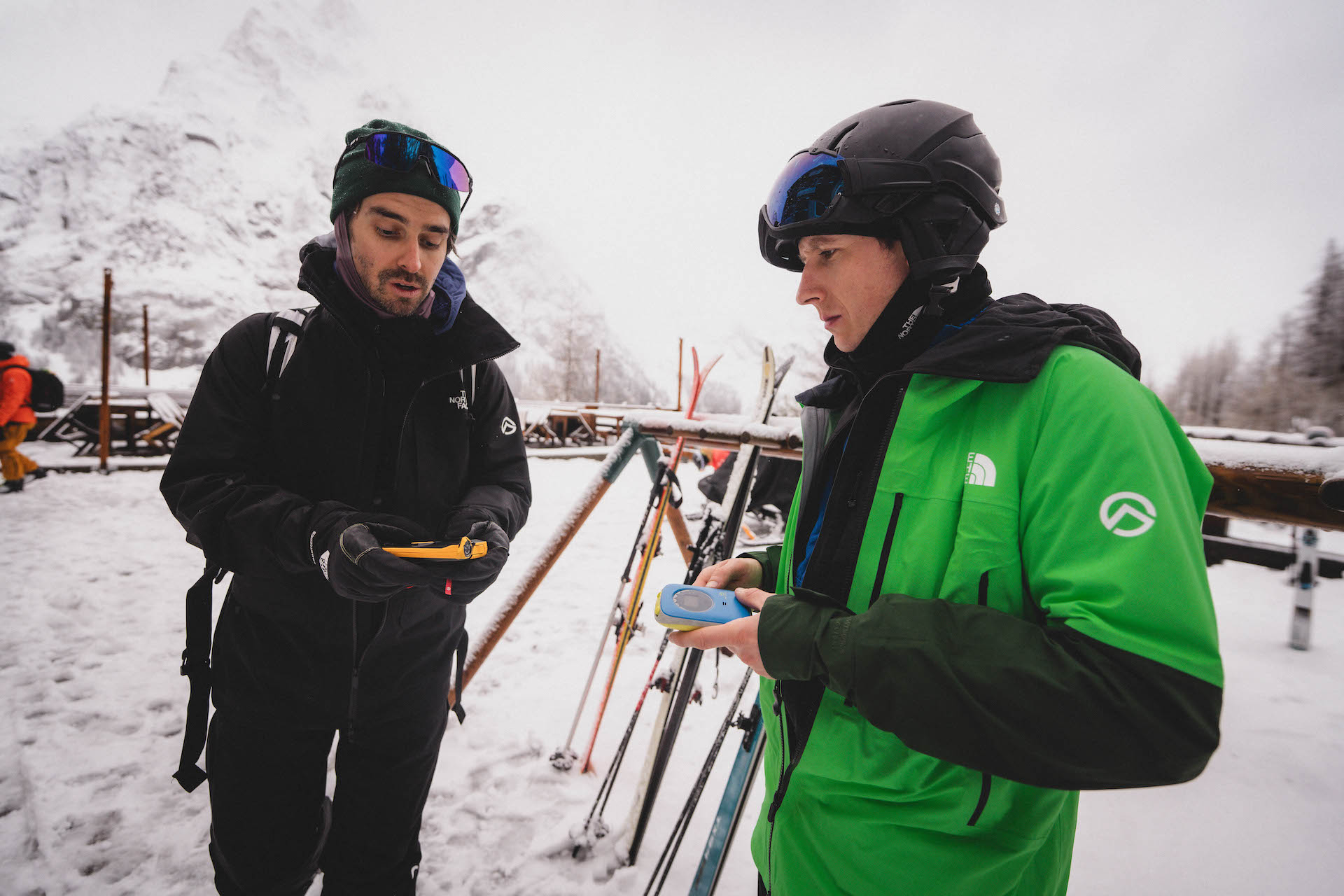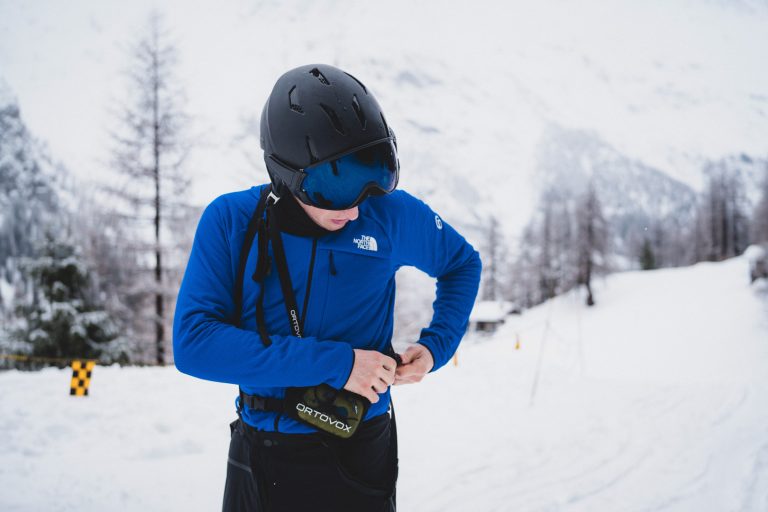The North Face’s Summit Stimson is, as you can probably tell from the £540 price tag, one of the American brand’s top-level waterproof jackets. It’s designed primarily for backcountry skiing and snowboarding and therefore it has a long cut as well as a host of technical details to cater for high tempos and demanding conditions.
I tested it out in just about perfect gear testing conditions in the mountains of northern Italy, wearing it through some nice snowfall but also heavy rain and through a range of different activities from hiking through to piste skiing. Here’s how I got on with it.
Fabric Performance
This is made from The North Face’s Futurelight fabric. Released a few years ago (to much fanfare) this waterproof fabric has gained a strong reputation for being highly breathable. It’s made via a process called nano-spinning where an electromagnetic field is utilised to weave a super-fine mesh of polymer fibres. Moisture in vapour form is able to pass through this mesh, but liquid molecules cannot.

Here at Outdoors Magic, we’ve tested out a number of Futurelight garments over the years and, with each one, the breathability, lightness and stretchiness of the fabric has certainly been notable. Things are no different with the Stimson; on one of the mild, rainy days I wore it on, I didn’t notice any clamminess – even when I had to yomp 50 metres uphill through powder to recover a ski after I completely wiped out.
Related: The North Face Futurefleece reviewed
Where we have had our doubts with Futurelight here at Outdoors Magic however, is in the durability of the fabric, with past editions feeling on the flimsy and fragile side – too much attention to breathability and not enough on durability. Have things changed though? It seems they have, somewhat. Being their own proprietary fabric, The North Face have complete control over how it’s made, including how thick or thin the material is, and they say that they have beefed up the Futurelight membrane on this particular jacket, making it more durable and more protective.
From my tests, it does seem more dependable than the early editions of Futurelight that I tried and I haven’t ripped it or noticed any points where moisture has managed to get in. But I would still say that the Futurelight fabric does still feel quite thin and a little fragile compared to standard Gore-tex or the likes of Demizax or Schoeller and I’ve felt I’ve had to treat it a bit more carefully than I would with some of the other jackets I own.
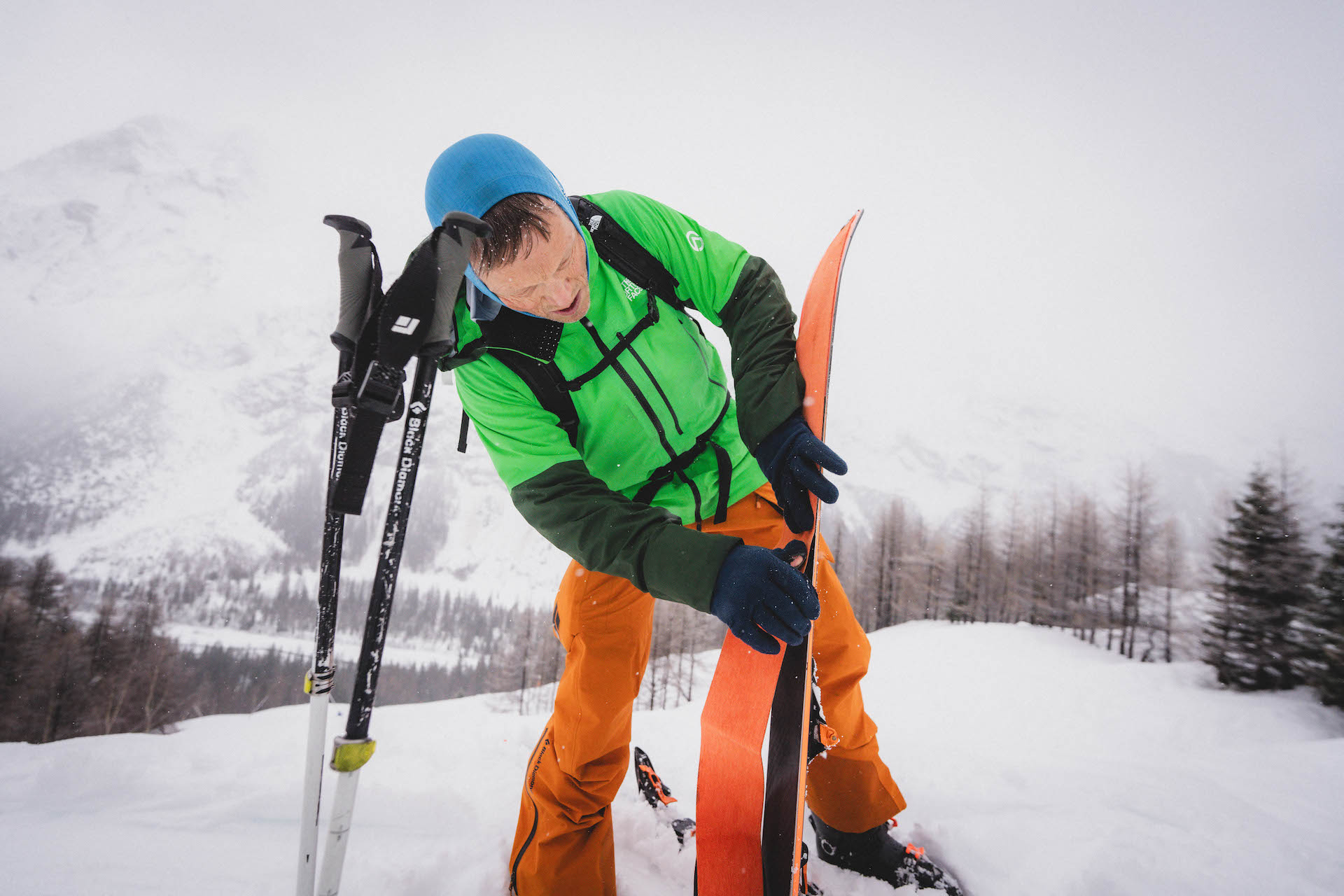
Back to the breathability though. This jacket really does excel in that regard. With the fading away of Polartec Neoshell, which in the past was regarded as one of the most breathable membranes out there, I’d say Futurelight might well have picked up the mantle. Sadly TNF won’t give MVTR (moisture vapour transmission rate) figures, but from my experience, Futurelight seems like the new leader.
Wet Weather Resistance
It’s waterproof, there’s no doubt about that, though I have noticed that the Stimson’s outer fabric did begin to wet out quite quickly and it needed reproofing with Nikwax – something that I think will need to be done on quite a regular basis. With the switch to PFC-free DWRs that’s happened in recent years, most jackets will tend to saturate quickly now, so Futurelight isn’t alone there. The new Gore-tex ePE fabric is very similar to Futurelight; it comes with a modern ‘eco-friendly’ water resistant treatment that just doesn’t have the strength or staying power that the non eco-friendly treatments used to bring. At the moment however, this seems the price we have to pay for being more eco conscious.
Features
The North Face’s Steep Series, in which this jacket sits, was developed with the help of The North Face’s athlete team which includes steep skiers, alpinists and Himalayan mountaineers, and it really does show. This jacket has all the kind of details you want when you’re facing up to difficult conditions and tricky terrain.

